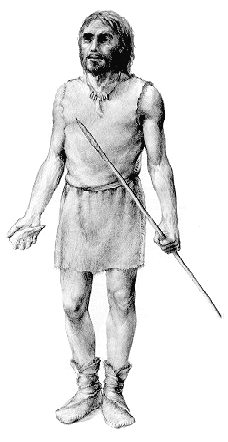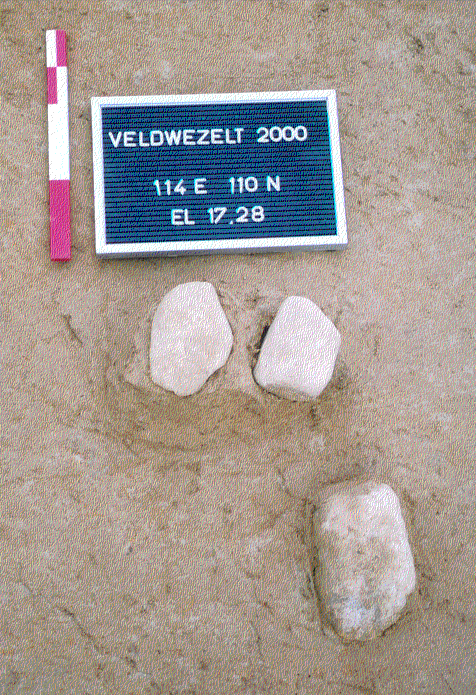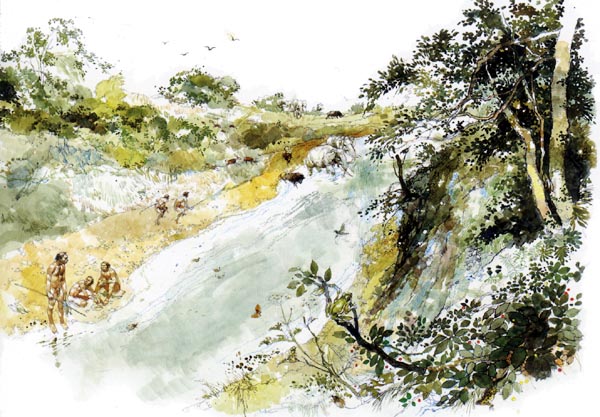Veldwezelt-Hezerwater 2003: Burrowing in Belgium

This year's excavation campaign will run from 25 July to 25 August 2003 and will take place at Veldwezelt, a village in Belgium about three kilometers from Maastricht in the Netherlands. The site is located in a loess quarry formerly owned by the Vandersanden family, operators of several stone factories. The site has produced artefacts dating from the Middle Palaeolithic and offers an ideal opportunity for students to learn and apply geoarchaeological principles.

The Veldwezelt-Hezerwater sites were discovered in 1997 by three archaeologists following cuts made into the quarry. The project to excavate the site is handled by the Katholieke Universiteit Leuven. Stratigraphically the site is very complex. The quarry reveals a beautiful profile with sediments and soils of a larger part of the last and second last Ice Ages and the Last Interglacial.
Neanderthal artefacts have been found at several levels. The oldest are situated at the end of the second last Ice Age (late MIS 6) and have been dated to around 135,000 years BP. The second level is related to the Last Interglacial s.l. and is estimated to be around 85,000 years BP (MIS 5a). Several younger levels can be situated in the middle of the last Ice Age s.s. (MIS 3) and are estimated to be between 60,000 and 50,000 years BP.

The lithic material of the different levels belongs to the so-called "Middle" Paleolithic and consists mainly of flint artefacts found in concentrations. The artefact concentrations form an uncontroversial indication of Neandertal activity on the spot and it would seem that the Neandertals must have looked for flint nodules in the terrace gravels. They knapped the flint on the spot using Levallois and non-Levallois technologies and made various tools from the resulting flakes and blades. So far, excavations have uncovered points, sidescrapers (for scraping hides) and knives (for cutting) as well as other tools.
Settlements of the Neandertals in Flanders are rare and while a few other sites have provided some Neandertal artefacts, only Veldwezelt-Hezerwater (Belgium) and the nearby Maastricht-Belvédère sites (The Netherlands) offer the opportunity to reconstruct the chronology and the environment. When plotting the artefacts already discovered at the "Upper-Site", it was discovered that the smaller, more debitage artefacts were clustered in one area, while the larger pieces and tools were found elsewhere. There may be some spatial patterning within the site. This summer's excavation will explore this theory.

The excavation day will begin at 8:30 a.m. and end around 5:30 p.m., with a 45 minute lunch break at noon. Dig participants will bunk in a school at Vlijtingen located approximately three kilometers from the site. Participants are expected to bring their own sleeping bag and foamy.
Financial assistance for room and board during the dig is available, but students will have to pay for their own food on the weekends, though they may remain at the school. Ordinarily, weekends will be free for travel, but some short excursions to other sites in the area may be arranged and students will be expected to attend. Students interested in participating in the excavation campaign are expected to fill out the .
